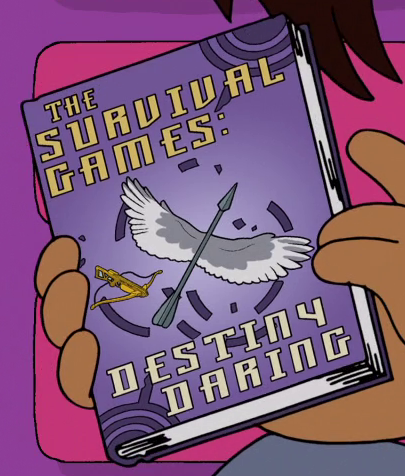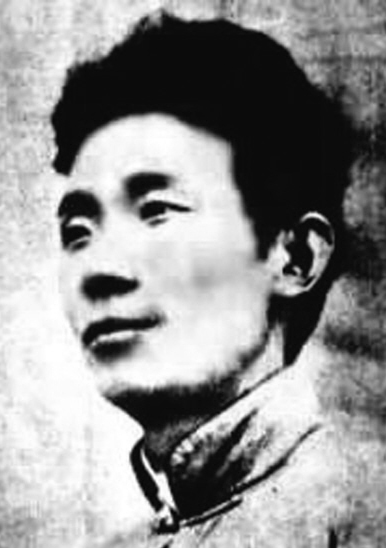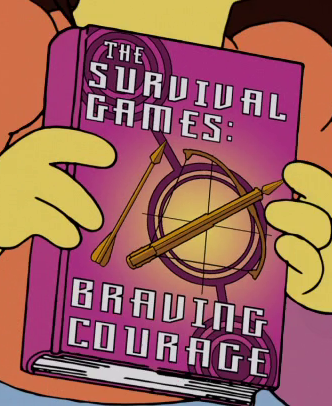Iain Banks is perhaps most famous for the novel”The Wasp Factory”, which was published in 1984 and was Banks literary debut. Banks, after “The Wasp Factory” has written several popular Science Fiction novels, along with his more “conventional fiction”, most notably these include The Culture Novels which deal with a future planetary society where machines have become conscience creatures and humans and machine-consciousnesses live side by side. The first book in the series is “The Player of Games” and he begins the slight alteration of his name in the science fiction literature with the inclusion of an “M” as middle initial.
“The Wasp Factory” tells the odd tale of 16 year old Frank. He lives on a small island with his father, spending his time in the strangely personal ritualistic killing of animals and grandiose pleasures of seeking prophecies from his Wasp Factory. The prophecies work through the dreadful trapping of a wasp into the terrible machinery of a clock prophecy machine. Inside the mechanism are many pathways the wasp can make its way through but all inevitably lead to death: one is where there is a small fire leads to a prolonged burning to death, another is filled with Franks urine which leads to a gruesome drowning and a third, of the many pathways to prophetic death, is a tunnel which leads the wasp to slow crushing. Frank believes he can foretell the future from what way the wasps will “choose” to die and the metaphors which surround the dreadful device of death. The novel begins with Frank receiving one of these steadfast and defining prophecies from this appalling engine of foretelling that informs him that his brother Eric will escape from the mental hospital has been sequestered in for years. This beginning sets the stage for a series of bizarre phone calls from Eric. The series of phone calls trigger in Frank remembrance of his earlier years when he went through a “phase” of early childhood spontaneity and detailed “play” in which he thought through and killed three playmates and relatives (one which is his other, younger brother Paul). Frank recalls his murders one by one while continuing his ritualistic and shamanistic killing of animals on the island. When Eric calls, Frank attempts to reason with his brother and figure out where he is hiding and his plans for making his way to the island, all the while keeping these calls a secret from his father and carrying out his own irrational agenda.
“The Wasp Factory” is a breath-taking reading experience, even if the story is disturbing. Franks calm and matter-of-factly narration of violence and murder is chilling. The narrative violence is also quite surrealistic in the underlining of Franks claim that he committed his first two murders under the age of ten. Even if the book is very grisly, Banks is also able to add a dark and light humor to the disturbing narrative. Eric’s maniacal phone calls to Frank are strangely hilarious and a conundrum of language and sense. Much like his brother, Eric is unjustly and absurdly cruel to animals. And we find out fairly early that Eric was been committed and shipped off to the mental institution for setting dogs on fire. Why Eric has been doing this is later revealed in the book.
“The Wasp Factory” deals with many interesting themes. One is its critique of human superstition. Franks obsession with his prophecies and the rituals in which he mercilessly tortures animals is a sharp attack on the horrors and absurdities engendered in “magical” thinking which requires of its followers and believers the most ridiculous and absurd of things. Banks points out that believing fanatically in the magical, the irrational, the unjustified and the illogical, without the application of thought, human reason and moral concern, can be that which is most dangerous for us and our societies. Another major theme attacked by Banks is the grounds of deception and the language of the lie. Here Banks is particularly and especially focusing on the lies of parents lying to their children and those under their care. Franks father keeps many, dark secrets from Frank which bares unbelievable and dire consequences.
But the most interesting theme explored in this novel is gender. At this point I will reveal a major spoiler, so be warned! If you decide that you want to skip the spoiler, scroll down to the last passage and read only that.
Frank is an extreme misogynist. He considers women to be, as he puts it, one of his greatest enemies:
“My greatest enemies are women and the sea. These things I hate. Women because they are weak and stupid and live in the shadows of men and are nothing compared to them”.
Frank later in the novel continues his ruthless bashing of the female gender by saying:
“Women, I know from watching hundreds – maybe thousands- of films and television programs, cannot withstand really major things happening to them; they get raped, or their loved ones die ,and they go to pieces, go crazy and commit suicide or just pine away until they die ”.
He proudly claims that men are good at killing and strong because of this. Frank bathes in male chauvinism, seeing women as the stereotypically “weaker sex”. Frank can’t find anything redeeming in the entire class of women. Nothing. His misogyny, however, backfires on him in the end of the novel, when Frank realizes he himself is actually a female. Frank is actually a woman who has just been secretly fed male hormones and has been nurtured as one of the gendered male clan. Franks father has experimented on Frank to see if he could change him/her into a male without him/her realizing it and so he/she has been told that his/her penis was bitten off by a dog when he/she was a toddler and therefore had nothing “down there”. At the end of the novel, when Frank is confronted with his/her supposed biological gender he/she is horrified and cannot accept this fact. Frank cannot accept himself as a woman, but in the oddity of her/his psyche it is because he/she thinks of themselves as ” good at killing” which would, in the strange logic of the ritualistic sex and death, crush the idea that women were weak and men the strong ones.
Frank turns out to be a woman that hates women. It is ironic to remember his hate speeches of women only to discover he himself has an XX chromosome.
“The Wasp Factory” bravely states, by the narrative mechanism of Franks ideology being crushed by his true identity, that we as humans always think we know where the line of femininity and masculinity are drawn, but in the end it is impossible to say how women are and men are and is a function of our cultures and our families. Since all humans are individuals what we are is human and not gender.
When “The Wasp Factory” was re-published on its 25th anniversary in 2009, it came out with an edition that featured a new preface by Iain Banks. It is interesting to read what his goal was when he wrote “The Wasp Factory”:
“…it was suppose to be a pro-feminist, anti-military work, satirizing religion and commenting on the way we’re shaped by our surroundings and upbringings and usual skewed information we’re presented with by those in power”.
These were Banks intentions and targets in the work of the Wasp Factory and he succeeded perfectly in reaching his goals! Few authors in my opinion have done such a well job on getting this still important and contentious “message” across to the reader with such force and clarity. “The Wasp Factory” is a work that is so good it hurts.














Great review/comment/whateveryouwannacallit
Haven’t read the book though, so I’m slightly annoyed that you spoiled Franks “status”/whateveryouwannacallit
Well, not that it will keep me from reading it anyway at some time in the future
//UT
I’m glad you liked my review! And I apologize about telling Franks status. I mentioned that their would be spoilers in the post, perhaps it wasn’t clear enough.
But good thing you still want to read the book! It’s worth it even if you know about Franks “status”, as you pu it. 🙂
they did say they were about to spoil it and to scroll down if you didn’t want it to be spoilt
Hi,
I think I mention it in the post, so your right! 🙂 However, maybe I should update and put a “spoler alert” in the title?
Jättebra inlägg! Som sagt förut så älskar jag att läsa dina recensioner. Du är så bra på att analysera och ta upp olika infallsvinklar och skriva om det på ett bra och underhållande sätt. Den här boken kommer jag absolut läsa en dag. Den verkar mycket intressant och medan jag läste ditt inlägg blev jag jättenyfiken på att få veta ännu mer. 🙂
Tack! Jag är jätteglad att du gillar mitt sätt att göra recensioner. Man är alltid lite rädd att skriva recensioner för att man vet aldrig om man lyckas väcka intresse eller inte…
Ah, härligt att höra att du planerar att läsa “Wasp Factory” en dag! Det recommenderar jag. 🙂 Den är sjukt intressant bok, verkligen!
Tackar igen för din fin kommentar!
I like Your points!
Thank you! 🙂
Being a fan of both “the Wasp Factory” and Bank’s Culture novels your review of this book made me consider how the culture novels are Bank’s way to try and show what a society which respects and puts to the forefront rights of the thinking being might be, in distinction to the problematic he wishes to critique in the Wasp Factory.
As the machines and humans both have consciousness in the Culture Novels, Banks lets both of these members of the society be totally self determining and given as much information as possible to make these decisions (though his books play with the information idea). After a “mind” (thinking and conscious machine) is built, regardless of the function which directed the building, the mind-machine is asked what it would like to do (and does this throughout its existence). This is mirrored exactly in the human component of the society.
Some conditions are assumed by Banks (no wants, ability to change sex by all human members) to make this work, but no legal framework is then necessary to mold conscious actions in Banks Culture. Convention, freedom, thought, and a language (Marain is the Culture’s language) which has no prejudices (nor is inclined to them) informs the Culture.
The Wasp Factory is actually the Anti-Culture Book, in a way. And It is no surprise Banks would attempt the “affirmation” of what a society should be after the “negation” of the Wasp Factory!
See here for an interesting read on the idea Banks Develops about the Culture:
http://en.wikipedia.org/wiki/The_Culture
Also, what is interesting, and a bit different in the Culture Novels, is that thinking machines and thinking biologicals live side by side (unlike most of the fiction of clash: Terminator, and The Matrix, for example).
We have this, then:
Björk- All Is Full of Love
Instead of this:
Flight of the Conchords – The Humans are Dead
P.S. My Favorite Culture Novel is “Excession”.
Who wouldn’t like a novel where the major theme is culture meeting an Outside Context Problem (OCP). That is a problem they couldn’t even begin to comprehend or believe can even occur (and it usually means the end of the civization).
Banks talks about it like this:
The usual example given to illustrate an Outside Context Problem was imagining you were a tribe on a largish, fertile island; you’d tamed the land, invented the wheel or writing or whatever, the neighbours were cooperative or enslaved but at any rate peaceful and you were busy raising temples to yourself with all the excess productive capacity you had, you were in a position of near-absolute power and control which your hallowed ancestors could hardly have dreamed of and the whole situation was just running along nicely like a canoe on wet grass… when suddenly this bristling lump of iron appears sailless and trailing steam in the bay and these guys carrying long funny-looking sticks come ashore and announce you’ve just been discovered, you’re all subjects of the Emperor now, he’s keen on presents called tax and these bright-eyed holy men would like a word with your priests
Haven’t read “The Culture” novels yet, will have to see if I can get my hands on some of the books in that series. I looked at your link to Wikipedia. Pretty well thought out world (naturally – Banks is a clever writer!).
The plot of “Excession” sounds interesting. Clash of Cultures are always difficult.
I haven’t thought of “Wasp factory” as an anti-culture novel. I guess it is, anti-indoctrinating culture. It seems that in “The Culture” novels people are taught “good manners” and are given a choice, which is what “good cultures” would do. “Wasp factory” was a description of a culture where you are lied to and deceived. So naturally Banks is against it.
Another Science Fiction portrayal of a world where humans and conscience machines live side by side is the movie “I.A – artificial intelligence”. However, the humans are the oppressors in that world. In Sci-fi, it is usually shown that the machines are the dominant oppressers (like in “Matrix”, “Terminator” films) or vice verse (Metropolis, 2001 Anime Version and A. I). Banks “Culture” series is on of the very few where humans and machines learn to get along. 🙂
Great review. I wasn’t quite sure what to make of The Wasp Factory ; I knew I was missing much but still wondered if it was simply an exercise in shock and gore. But this has gone a long way to helping me understand what Banks was going for, so thank you for that.
Out of curiosity; who’s the guy in the first picture in this review? (It’s not Iain Banks.)
Reblogged this on Inside One Mind.
Hello! Thank you so much for reblogging! So sorry for late answer. Been busy trying to get a job and also some sickness.
You sure the guy is not Ian Banks? When I did a search, I found this image; I believe it´s him as younger and also in a perhaps awkward pose?
“The Wasp Factory” was in parts quit gory, even if the gore was kind of strange and surrealsitic. I think the fore was suppose to show how misguided Franks superstion was, and also make it seem as if Frank was a unreliable narrator (like did he really kill three people when he was a kid or not). Either way, I´m super glad you commented and that you liked my post!
Take Care/ Maaretta
Oh! Thank you! 🙂 You’ve made my day!